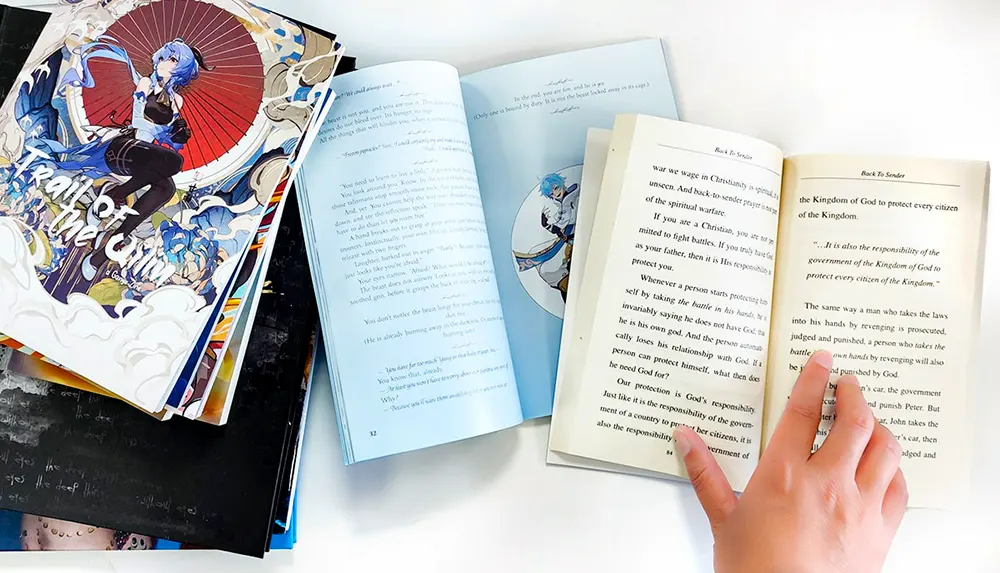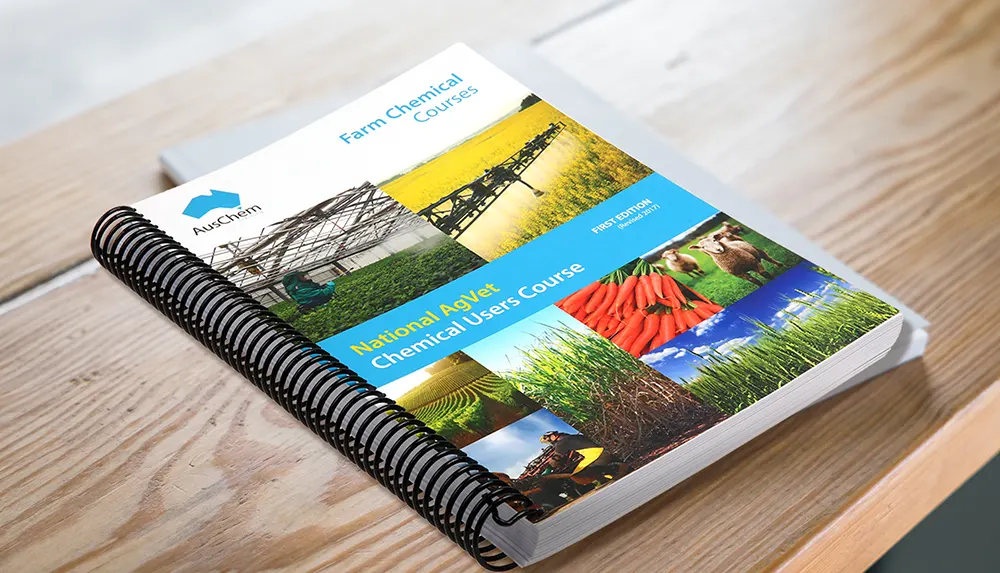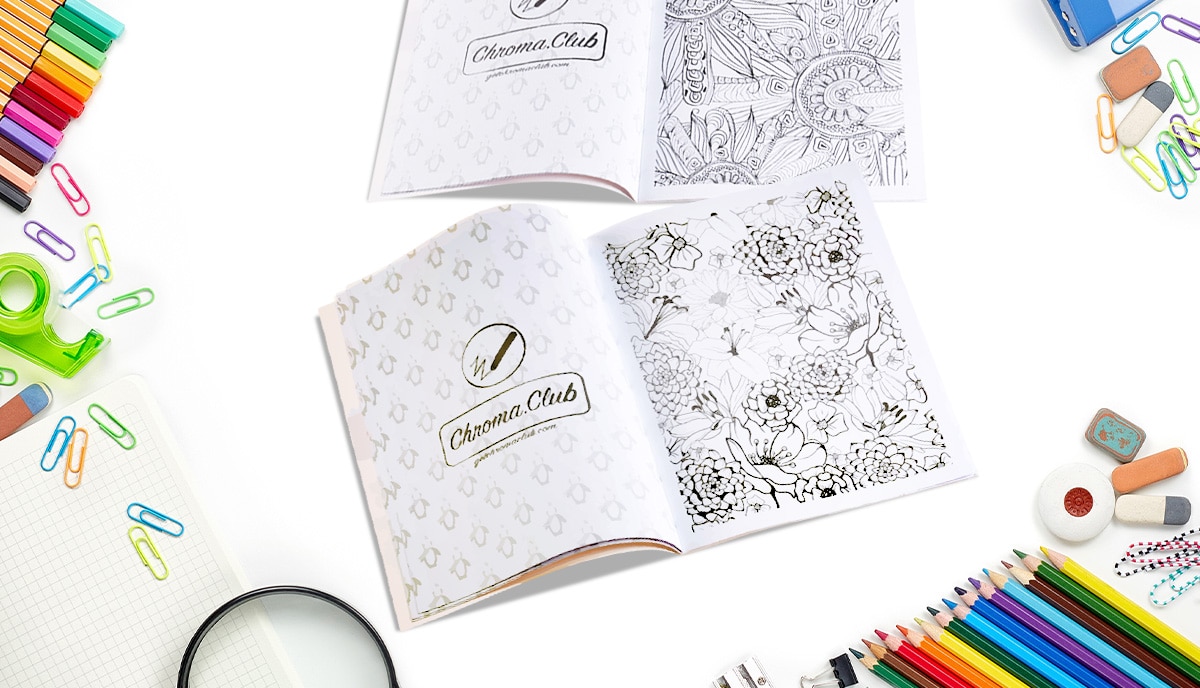A detailed, step-by-step guide to choosing the interior and cover printing styles for your self-published book
Book Printed by QinPrinting
Why are most books printed in black-and-white?
Most books are printed in black-and-white — although more often than not, the ‘white’ paper used is actually ‘off-white’ — because they are mainly text and it’s easier to read black ink on a white page than it is to read a page printed with colored ink or white letters on a black page.
And even though you’re self-publishing your book — and so you have complete freedom to do it however you wish — it’s wise to think carefully before you depart from certain accepted norms. It’s not always the case, but most often if everyone’s doing a thing the same way, there’s probably a good reason behind it.
You may have wondered why are most books printed in black-and-white? The question of using unusual colors on unusual paper comes up a lot in the self-publishing forums. The questioners are usually new, inexperienced authors who want to make their work ‘stand out’ from the crowd. It’s understandable in a very crowded and competitive marketplace. But on those same forums, you’ll also read wiser and more experienced authors advising against such wild experiments. One of the first rules of successful self-publishing is to look at what the mainstream publishers have been doing for centuries and then, as far as possible, do that!
Why? Because in the end, your success as a self-publishing author comes down to how happy your readers are with the experience you give them. Your book may be beautifully written and captivating literature, the most gripping of all gripping thrillers, or the steamiest of steamy romances, but if you make it physically hard for your reader to scan and absorb the text, no-one will read it. Traditional publishers know this. So do savvy self-publishers.
But easy reading isn’t the only explanation for why most novels and non-fiction books are published using black ink on a white or off-white paper. It’s also got a lot to do with the economics of printing and the equally important economics of publishing and distribution. In short, a book with a traditional black-and-white interior is much cheaper to produce than one with colored pages or colored typography.
You might have noticed with your home computer printer just how fast the color ink can run out when you print a few photos or a colored chart, and how much more the cartridge costs in the first place. Scale that up to the quality and quantities of ink needed to print hundreds or thousands of books with hundreds of pages each, and you’ll soon see why printing your book’s interior in black-and-white makes much more sense; especially if you plan to sell it at a comfortable profit. That’s the first answer to our question, why are most books printed in black-and-white?
Of course, your book’s cover can — and should — be printed in color. A cover is the first thing your potential reader sees, and it’s often a beautiful cover which persuades them to look inside and read the first few pages. But printing the cover is a separate part of the process of producing a book.
When to choose color printing for your book
All of that said, certain kinds of books need interior color printing. For example, children’s picture books which rely on illustration to tell the story and have just a few short lines of supporting text. More complex textbooks which need color illustrations and diagrams could be another example. And, of course, a book of artworks or photographs may merit full color printing.
If you really want to add color illustrations into the interior of your book — and you might if you’re publishing chapter books aimed at the middle grade market, say — then a print run with a traditional offset printer will be cheaper than the POD (print-on-demand) services offered by Amazon, Ingram Spark, Lulu, and others.
The reason is a technical one. A custom printer has the facilities to print the text of your book on machinery dedicated to black-and-white production, and to print the color illustrations on a separate machine dedicated to color. The pages are then collated and bound together. With the POD services, which use less advanced and less flexible technology, your book must be printed either on the black-and-white printer or on the color printer. So, even if you have just a handful of color inserts, you need to pay the higher cost of color printing for the whole book.
But most self-published books in paperback or hardback editions are novels or other texts with few — if any — illustrations or photographs. So, in most cases, printing your book in black-and-white is the best choice. It’s cheaper, and it gives your reader an easier time.
White vs cream paper
Another question that comes up again and again in the self-publishing forums is a debate which is as old as self-publishing itself: should you print on pure white paper or cream paper? The reason this comes up so often is that most first-time self-publishers tend to use the POD services for paperback editions of their books. They may not realize that it isn’t always the cheapest option and doesn’t always produce the best results. But automated self-publishing platforms like Amazon’s KDP and others can only offer a limited range of paper types. So, you’re faced with this binary dichotomy: pure white or cream? If you’re going that route, the consensus is that cream paper is easier on the reader’s eye than pure, startling white.
Other self-publishers — either because they’ve gone to more trouble with their research into the possibilities available to them, or because they’ve had some success and they’re ready to up their game — often choose to cut out all the ‘middle men’ and really take creative control of their business. In those cases, a custom offset printer is the best choice. The quality of the service, the product, the range of options for paper and ink, sizes and trim, and so on, and the cost efficiency of a larger print run, out-compete the automated DIY services on every measure.
In short, while it may make perfect sense to ‘cut your teeth’ as a self-publisher with Amazon KDP, Ingram Spark, or Lulu, once you’ve got some experience, built a sizable fan base, a responsive email list, and you’re ready to embrace the full creative possibilities of being an ‘authorpreneur’, then custom offset printing services are always worth exploring. And the range of paper types and printing options will lift you out of the endless white or cream debate forever!
Printing a book with an offset printing service
Step One: book design
When it comes to printing your book, you’ll go through several stages of design and production. The first step is to work with your designer to finalize the interior layout; including the typography and any flourishes such as fancy fonts, drop capitals, dividers, and the artwork and layout for the book’s cover and dust jacket if you’re printing a hardcover. A good custom printing service will give you lots of information, advice and support at the outset. They’ll also offer you design templates, samples, and more to pass on to your designer so that the final files are perfectly harmonized with the technology and services the printing company provides. They should also give your designer all the information they need about binding options, paper types, embossing, and so on.
Step Two: Choosing the paper for your book’s pages
With Amazon and Ingram Spark, you don’t get any choice over paper other than ‘white or cream’. But your custom offset printer will give you a catalog of samples of different colors, weights, and types so that you can make the best choice for your book and see for yourself what effect the printed paper has on the hand and on the eye.
Step Three: Choosing the binding for your book
The next step, once the printing files have been finalized, is to decide on the best binding. Again, the do-it-yourself services offer basic, often inferior, paperback covers or a basic hardback option, and that’s it. Your custom printer can advise you on a wide spectrum of possibilities depending on your book and your budget.
The most popular choices are saddle-stitch or perfect binding. Perfect binding is a durable and economical option for a paperback novel of average length, for example. But then there’s also spiral binding, board book binding, sewn-and-perfect bound, and wire-O possibilities. And, of course, hardback.
All hardback books use case binding. Whereas the automated POD self-publishing services offer you very little—if any—choice in this regard, an offset printer will usually give you a range of finishing options, including glue-binding or thread sewing; paper, fabric, cloth or leather; square or round backing; foiling, embossing, and debossing; colored head and tail bands; and ribbon markers.
Step Four: Creating the dust jacket for a hardcover
Dust jackets were first introduced in the 19th century to protect cloth-bound covers. Today, they are a feature in their own right. While still providing the protection for which they were originally designed, they finish your book with eye-catching artwork and the inside flaps give space for a more detailed ‘blurb’, quotations from positive reviews, and an author biography. The dust jacket artwork and layout will be the responsibility of your designer working closely with the templates and information provided by your printer.
Step Five: Samples and proofs
Before printing your books, you’ll want to be certain that the finished product will be everything you’ve hoped for. Reputable offset printers will always send you proofs and samples before starting a print run, so you have time to check that everything is in order and to correct any errors before going to press.
Step Six: Printing, packing, and delivery
The final step is to print your books. Once they’re printed, they’ll be carefully packaged to protect them in transit and delivered to you or your chosen storage facility. The best custom printers these days—aware as they are of the needs of self-publishers—will also offer storage for a set period, often up to a year. During that time, they can deliver batches of books, or even single volumes, to you as you need them. So, there’s no need to fill your spare bedroom with boxes!
A last word
As you’ll have understood by now, there’s a lot to think about when designing and printing your self-published book. While Amazon KDP, Ingram Spark, Lulu and others may be the right choice for you depending on your needs and the stage you’ve reached on your self-publishing journey; it’s worth giving custom printing services some serious thought. There’s no comparison in terms of the personal level of service and the high-quality of the finished product. If you’ve put your heart-and-soul into writing a book—and gone through all the hard work of getting to ‘The End’—you’ll want a beautiful book that will honor all that effort and give your readers a book they can treasure.




